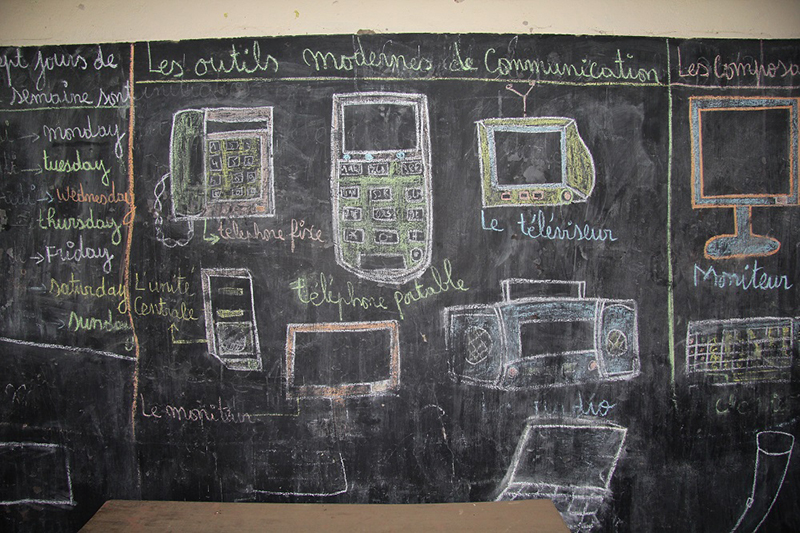According to a joint report by UNICEF and the International Telecommunication Union (ITU), two-thirds of school-age children worldwide—approximately 1.3 billion children aged 3 to 17—do not have internet access at home. This figure highlights the scale of the digital divide and demonstrates how this inequality perpetuates barriers to accessing quality education.
The challenge of digital transformation in education is not solely about a lack of infrastructure but also about how technological solutions have been implemented in the education sector. For years, digital initiatives have been fragmented and driven more by technological innovation than by human and educational needs. Furthermore, most of these initiatives have overlooked key issues such as equity, sustainability, and cultural relevance.
In this context, how can we ensure that technology becomes a tool for equity rather than an amplifier of inequalities? This is the fundamental question addressed by the publication Six Pillars for the Digital Transformation of Education, a comprehensive framework developed by UNESCO and organisations like ProFuturo, which seeks to redefine how education systems embrace technology, focusing on equity, quality, and social impact.
A People-Centred Transformation
The main goal of the Six Pillars for the Digital Transformation of Education is to provide countries and various educational stakeholders with a strategic guide to creating more inclusive, resilient, and sustainable education systems in an increasingly digital world. This framework goes beyond introducing technological tools in classrooms or digitising existing processes. It aims for a profound transformation that reconfigures teaching and learning to ensure education is accessible, equitable, and relevant in a connected world.
The framework has three core objectives:
- Closing the digital divide: Ensuring that all students, regardless of their context, have access to digital educational opportunities.
- Promoting holistic systems: Developing strategies that address all necessary dimensions for sustainable transformation: leadership, infrastructure, culture, content, data, and economic sustainability.
- Fostering global collaboration: Establishing a “common language” to facilitate cooperation between governments, organisations, businesses, and local communities.
For years, digital initiatives have been fragmented and driven more by technological innovation than by human and educational needs.
The Six Pillars of Digital Transformation
The framework organises digital transformation into six essential pillars. Each addresses a critical aspect of the education system and provides guidance for overcoming specific challenges.
Coordination and Leadership
What is it, and why is it key? Effective leadership is central to any significant transformation. Without a clear strategic vision and solid governance structures, digital efforts risk being fragmented, costly, and ineffective. This pillar emphasises the need for:
- Clear vision and goals: Establishing long-term objectives aligned with national educational priorities.
- Governance and regulation: Creating normative frameworks that promote the ethical, safe, and effective use of technology.
- Participatory change management: Engaging teachers, communities, and private actors to ensure inclusive implementation.
Recommendations:
- Develop national digital transformation strategies with multisectoral input.
- Promote a culture of data- and evidence-based decision-making.
- Implement monitoring and evaluation mechanisms to continuously adjust efforts.
Connectivity and Infrastructure
What is it, and why is it key? This pillar encompasses everything from internet access and devices to the infrastructure needed for sustainable technology integration in classrooms.
Key areas:
- Electricity and connectivity: Prioritising electrification and internet access in rural and marginalised areas.
- Devices and hardware: Ensuring all students and teachers have access to appropriate tools.
- Learning space design: Adapting physical environments to foster digital and blended learning.
Recommendations:
- Invest in offline and low-bandwidth solutions while expanding connectivity.
- Promote sustainable technologies using renewable energy sources.
- Prioritise user security and privacy in digital infrastructures.
Cost and Sustainability
What is it, and why is it key? Digital transformation in education requires not only innovative technologies but also financially viable and sustainable solutions.
Key areas:
- Diversified funding models: Involving public and private actors to ensure long-term resources.
- Efficient spending: Linking investments to expected educational outcomes.
- Green solutions: Incorporating sustainable practices in technology acquisition, use, and recycling.
Recommendations:
- Conduct cost-benefit analyses to optimise resource use.
- Establish clear budgets tied to strategic objectives.
- Adopt low-environmental-impact technologies and foster responsible digital citizenship.
Capacity and Culture
Why is this important? The success of digital transformation relies on the people who implement, use, and adapt it to their needs.
Key areas:
- Future skills: Integrating digital and critical skills into curricula to prepare students for a digital society.
- Teacher professional development: Providing continuous training for effective digital pedagogies.
- Family and community engagement: Involving parents and communities to create stronger learning environments.
Recommendations:
- Design educational programmes that include basic and advanced digital skills.
- Foster a culture of continuous learning and innovation.
- Strengthen partnerships with local communities to support digital transformation.
Content and Solutions
What does this pillar include? Ensuring digital content is high-quality, inclusive, accessible, and aligned with national curricula is essential.
Key areas:
- Learning platforms: Implementing secure and accessible technological solutions.
- Open content: Creating adaptable, free, and culturally relevant educational resources.
- Innovative pedagogical models: Personalising learning with tools like AI and gamification.
Recommendations:
- Create free, open platforms for high-quality educational resources.
- Promote co-creation of content by teachers and students.
- Develop digital assessment tools to recognise and certify learning.
Data and Evidence
What does it involve? This pillar highlights the importance of data to make informed decisions and design evidence-based educational strategies.
Key areas:
- Data analysis: Generating insights to improve educational experiences.
- Security and privacy: Protecting student and teacher information.
- Artificial intelligence: Implementing ethical, responsible AI to personalise and automate processes.
Recommendations:
- Design interoperable data systems for collaboration among educational actors.
- Train leaders and teachers in data analysis and usage.
- Implement clear standards for privacy and security.
Transformation is Possible
With an ethical, inclusive, and sustainable approach, this model offers countries the opportunity to rethink their education systems to make them more resilient, equitable, and aligned with present needs. Above all, this framework reminds us that the heart of digital transformation in education must always be people: students, teachers, leaders, and communities driving change to modernise and humanise education systems, ensuring that all children, everywhere, have access to quality education.
Download the full publication here.







